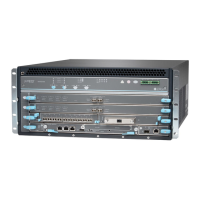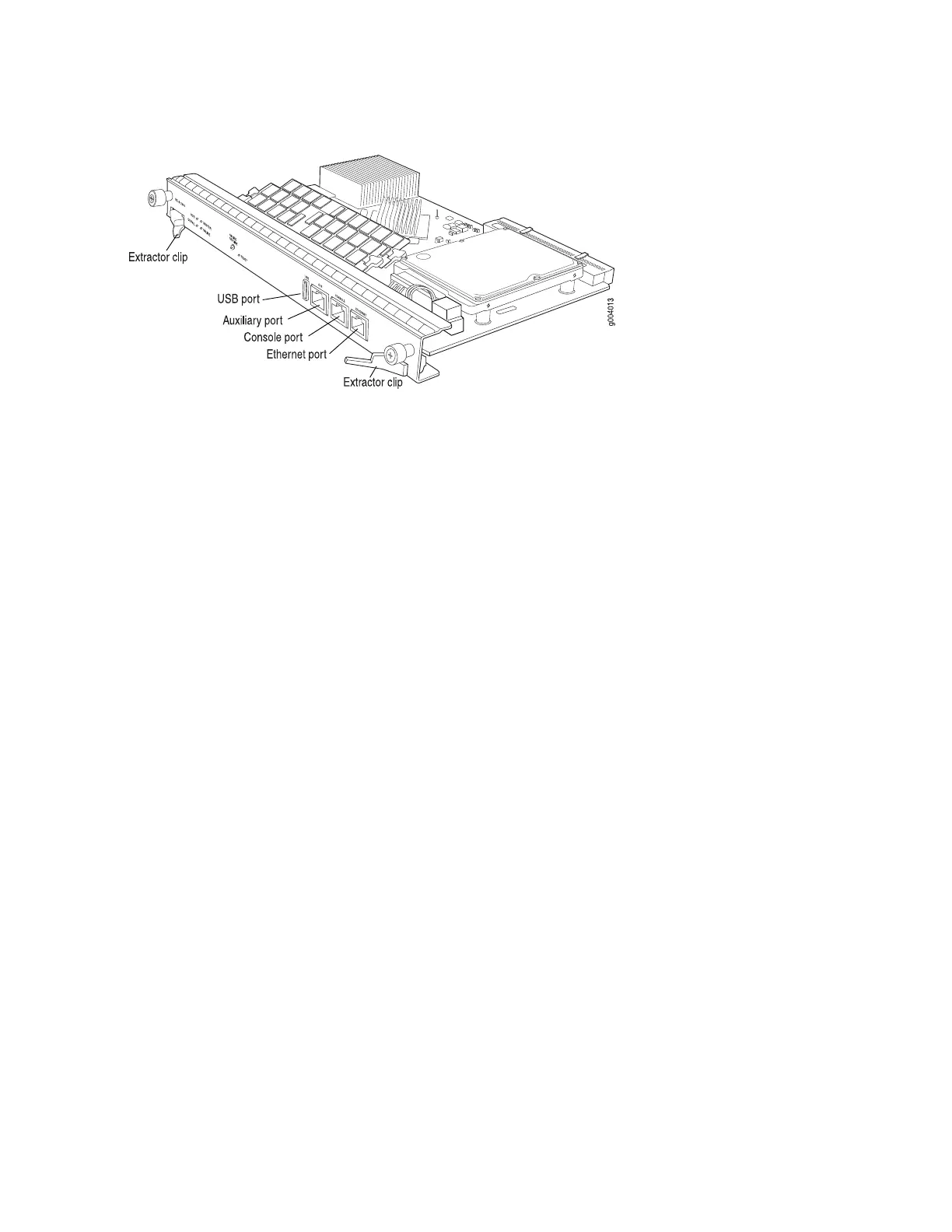Figure 43: Routing Engine
You must install at least one Routing Engine in the services gateway. You can install a second Routing
Engine if both Routing Engines are running Junos OS Release 10.0 or later. A second Routing Engine is
required if you are using the dual chassis cluster control link feature available in Junos OS Release 10.0
and later. The second Routing Engine does not perform all the functions of a Routing Engine and does not
improve resiliency or redundancy. The second Routing Engine and the Switch Control Board (SCB) in which
it is installed do not constitute a host subsystem. The only function of the second Routing Engine is to
enable the hardware infrastructure that enables the chassis cluster control 1 port on the Services Processing
Card (SPC) used for chassis cluster control links. If you install only one Routing Engine in the services
gateway, you must install it in the slot in the front panel of SCB0. If you install a second Routing Engine
to use the dual chassis cluster control link feature, you install it in the slot in the front panel of SCB1.
The Routing Engine consists of the following components:
•
CPU—Runs Junos OS to maintain the services gateway's routing tables and routing protocols. It has a
Pentium-class processor.
•
DRAM—Provides storage for the routing and forwarding tables and for other Routing Engine processes.
•
USB port—Provides a removable media interface through which you can install Junos OS manually. Junos
supports USB version 1.0.
•
Internal flash disk—Provides primary storage for software images, configuration files, and microcode.
The disk is a fixed compact flash and is inaccessible from outside the services gateway.
•
Hard disk—Provides secondary storage for log files, memory dumps, and rebooting the system if the
internal compact flash disk fails.
•
HDD LED—Indicates disk activity for the hard disk drive.
•
Management ports—Each Routing Engine has one 10/100-Mbps Ethernet port for connecting to a
management network, and two asynchronous serial ports—one for connecting to a console and one for
connecting to a modem or other auxiliary device. The interface ports are labeled AUX, CONSOLE, and
ETHERNET.
•
EEPROM—Stores the serial number of the Routing Engine.
78

